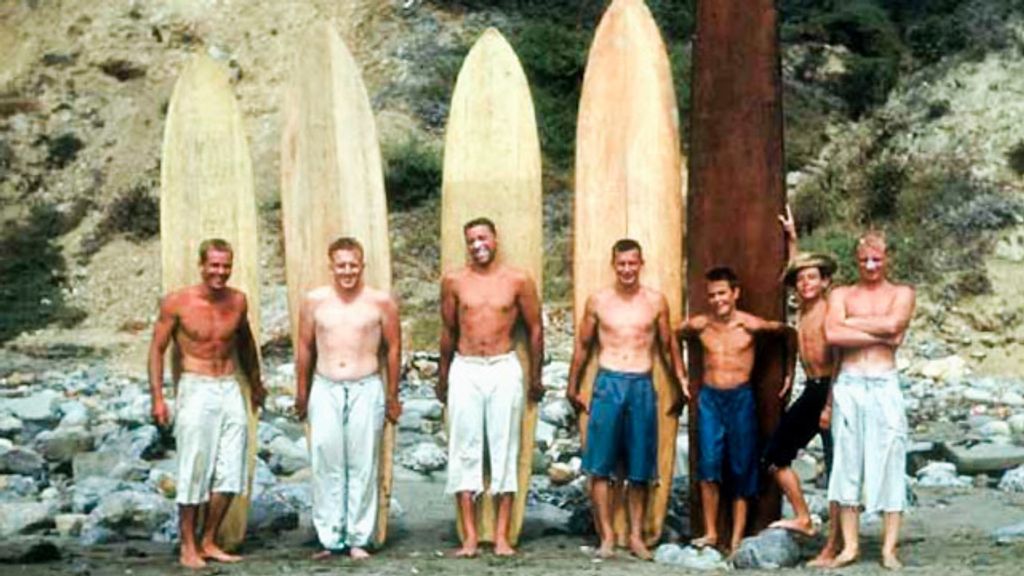SUNDAY JOINT, 3-7-2021: SO LONG AND THANK YOU TO PHIL BECKER AND MIKE EATON

Hey All,
Phil Becker died two weeks ago at age 81, and Mike Eaton died on Wednesday at 86. Between them, Becker and Eaton shaped north of 200,000 boards, with no machines involved save the ancient planers they kept alive with solder and electrical tape and spare parts. Phil’s work ethic was ridiculous, maybe pathological; he shaped the day his mom died, and during his own Hermosa Beach Walk of Fame induction ceremony a few years back he was in the factory inventing bitcoin. No, he was in factory shaping boards. My high school years were spent in South Bay, where Becker and Eaton were surf-world godheads, but I never met either one and never rode their wares—by that time both were heavily into longboards and funboards, while us kids were free-riding our way from stingers to twins to thrusters.
Both men, during the late ’70s, seemed older than they were. Becker’s cutting-edge moment came in 1967 when he developed and shaped the Dru Harrison Improviser and the Barry Kanaiaupuni Model, two of the best last-gasp longboards. Eaton shone brightest in the early ’70s, when he got involved with the Bonzer, made a beautiful North Shore quiver for rising Aussie star Peter Townend, and armed Jim “Wildman” Neece with a set of weaponized 12-footers for Neece’s aborted Kaena Point Challenge.
But even in their progressive heyday, Becker and Eaton were never glam or guru-esque, like Dick Brewer or Tom Parrish or Geoff McCoy. Mike and Phil just showed up for work each day, tucked their extravagant mustaches behind cheap 3M paper masks, did a million laps around the shaping bay, and produced a global supply worth of solid, easy-to-ride, joy-creating boards.

I knew that Phil and Mike were friends from way back, but not until I saw last week’s Easy Reader did I realize that both are featured in this amazing mid-’50s Palos Verdes Cove photo (below). That’s Mike on the far left, with the easy grin and ripped midsection (a lifelong hardcore paddleboarder, he did the 32-mile Catalina race at age 71), and there’s Phil on the right in the Huck Finn hat, possibly the last time he struck a pose for a camera. I don’t know if the two kept in touch. I do know that, even if you’re not a Hobbit-hugger like Wayne Bartholomew, all of us to one degree or another think of surfing as a lifelong grand adventure disguised as a sport, and that the people you knew and hung out with at the beginning have outsized roles because they are essential to your origin tale. Anybody who has given themselves over to the S&M-adjacent love story that is a life spent chasing and riding waves can say to a fellow traveler, regardless of age or station or place of birth, “We are so lucky to surf,” and the statement will be heartfelt. But when you say it to somebody who was there with you at the beginning, the luck becomes less amorphous, more contoured and specific. Phil and Mike’s luck began in that rocky cove in Palos Verdes, dragging wooden boards down the cliff trail, making pyramids from their sack lunches and T-shirts and Pendletons, and paddling into a cold Pacific in nothing but goosebumped skin and Navy surplus cutoff shorts.

Mike would have received the news about Phil’s death not long after it happened, and I like to think he dug out this picture of his original crew, looked at it closely, and gave his mustaches one last satisfied twirl before gliding away himself.
Thanks for reading, everybody, and see you next week.
Matt
[Photos: Bernie Baker, Greg Morgan]